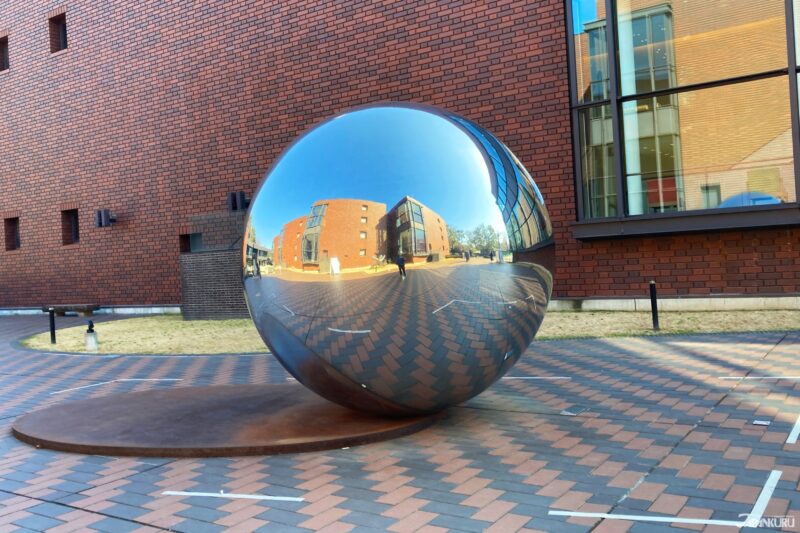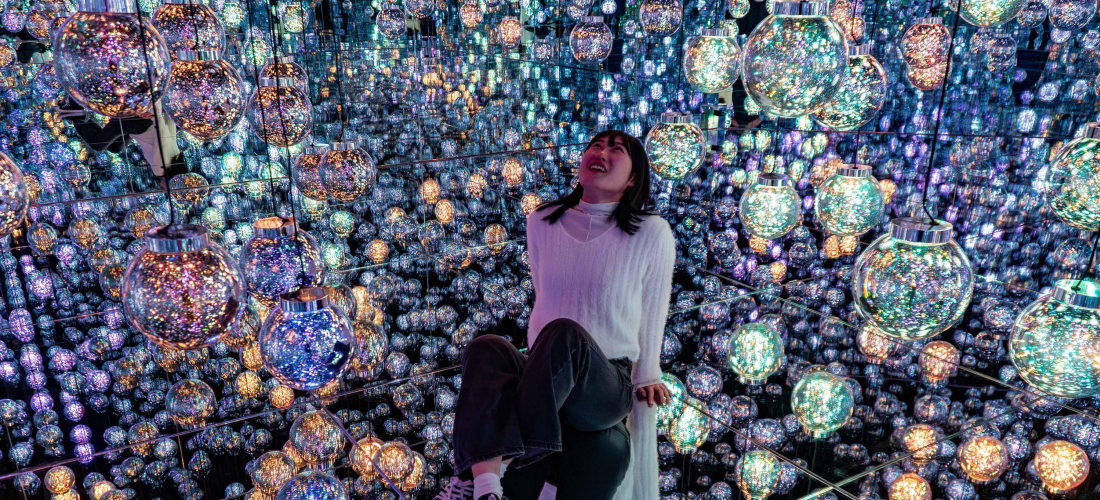CONTENTS
Now that the new TeamLab Borderless is open in Azabudai Hills, it’s time to compare Tokyo’s two TeamLab facilities and see how the new spot stacks up against the long-beloved TeamLab Planets. TeamLab Borderless or TeamLab Planets, which is worth a visit?
TeamLab Borderless or TeamLab Planets… Which Is Better?
As of February 2024, there are now two large-scale TeamLab facilities in Tokyo, which means we must once again face the question: with a limited number of hours in Tokyo, should you visit TeamLab Borderless or TeamLab Planets? The truth is that there probably isn't a "better" option, since each of them has its own pros and cons, and there's even a little bit of overlap. Both spots have their fans, so for big fans of the TeamLab art collective and their unique brand of eye-popping, interactive digital installation art, it might actually be worth visiting both. But for the vast majority of people with busy lives and limited budgets, it's a matter of one or the other. So should you visit Borderless or Planets? We've got some tips to help you decide.
General Experience
As two facilities developed by the same artist collective, TeamLab Borderless and TeamLab Planets have a lot in common, but the finished products definitely offer different experiences, which might be the most important deciding factor for the majority of visitors. The new and improved Borderless is a visual wonderland, with rooms covered entirely in moving projections (from the walls down to the floor) that shift from waterfall to growing flower, cave-like enclaves that serve as theaters for light shows, and flocks of colorful animals that flow across the walls from room to room. Planets, on the other hand, puts more emphasis on tactile experiences. There are rooms with squishy cushion floors and walls, where you sink with each step into a black hole of soft fabric, or with knee-high water that serves as a koi pond for fish, which burst into flowers as you splash on by. At Planets you spend your entire visit there with your shoes off, and it's surprising how much it can change the experience to feel every new work of art with your feet! Of course, for people who would really rather not go barefoot in a public place, Borderless lets you keep your shoes on and enjoy the experience with your eyes instead, so that might be a better choice. To sum it up, you might say that Borderless is especially adept at creating visual immersion, where Planets invites real, physical interaction!
Notable Artworks
If you're hoping to see the spellbinding strings of LED lights that make up Infinite Crystal World/Universe, you're in luck, because both Borderless and Planets have their own version of this particular TeamLab masterpiece. Most of the other installations, however, are only found in one facility or the other.
At TeamLab Borderless, look out for the glowing orbs of "Bubble Universe," the traditional creatures that parade across the walls in "Walk, Walk, Walk: Search, Deviate, Reunite," and "Sketch Ocean" – where you can draw your own sea creature to join a moving sea of marine scribbles.
At TeamLab Planets, wade among the koi in "Drawing on the Water Surface Created by the Dance of Koi and People – Infinity," bump back and forth between the huge bouncy balloons of "Expanding Three-dimensional Existence in Transforming Space – Flattening 3 Colors and 9 Blurred Colors," and slip between the real living orchids of "Floating Flower Garden: Flowers and I are of the Same Root, the Garden and I are One."
Size
Do you like to get the best bang for your buck? That's a little hard to determine when it comes to digital art installations, but one of the easiest ways to differentiate Tokyo's two TeamLab facilities is in terms of scope. Borderless is bigger than Planets. Or at least it feels that way – it's a bit difficult to tell once you're inside. An average trip to TeamLab Planets might take 1½ to 2 hours, unless you're running low on time or you really like to take a lot of pictures. A similar trip to Borderless will probably take closer to 2½ hours for most people, and if you're really determined to "see everything" (many of the rooms actually change over time to feature different visuals), you could be there for hours on end.
Location
Neither of the Tokyo TeamLab facilities is in a particularly convenient location, but neither is all that difficult to get to either. Both are quite close to a train station, which is nice! TeamLab Borderless can be found at Kamiyacho Station on the Hibiya subway line, and it's in the basement of the recently opened Azabudai Hills shopping complex, which has plenty of slightly upscale shopping and dining options. Borderless is also an easy walk from the Roppongi area, which has both museums and active nightlife. TeamLab Planets is just outside of Shin-Toyosu Station on the Yurikamome line, and it's quite close to Toyosu Fish Market and the new Senkyaku Banrai complex, which means plenty of food options, and also easy access for one of Tokyo's few urban hot spring spas. It's also quite close to the popular sightseeing area of Odaiba, or Ariake's shopping and miniature museum. Is there one area that you're already planning to visit? You might just want to add TeamLab to the itinerary.
Price
With fairly similar ticket prices, cost is unlikely to be the deciding factor for your trip to TeamLab, but there are differences. Starting March 2024, standard adult tickets for TeamLab Planets cost 3,800 on weekdays, or 4,200 yen on weekends, holidays, and other designated busy days. TeamLab Borderless has a slightly more convoluted pricing scheme, with ticket prices varying day to day, but the range is between 3,800 yen and 4,800 yen. If you're going during cherry blossom season, or you have very specific timing requirements, Planets might be slightly cheaper.
Both spots also provide opportunities to spend extra on food or drinks. Planets has the vegan ramen shop Uzu, which sits out front, and offers ramen and ice cream for about 1,800 yen and 700 yen respectively. Inside of Borderless you can find the En Tea House, which offers various tea-based drinks for somewhere between 500 and 1,000 yen each.
For Families with Kids
Can families with younger children visit TeamLab? It's a common question among sightseers looking to visit Tokyo's most popular destinations, especially because the answer can be a little complicated. There are no rules against kids visiting either TeamLab facility, and kids usually love their time with the digital art. For many families either TeamLab spot might be a great destination, but there are factors that might not make the facilities a good fit for every young child, especially kids under 7 or 8 years old. At TeamLab Planets, issues are generally physical, with deep water proving to be a practical barrier for younger kids. The "koi pond" water reaches up to a surprisingly high knee height for adults – much too high for younger folks to wade through comfortably – which means that little kids, and others who can't go through the deeper water, have to skip the room entirely. The issues at TeamLab Borderless are a little less concrete: pitch-black hallways, bright flashing lights that come out of nowhere, and some genuinely creepy visuals. For little kids who are easily frightened, it might be a little stressful.
Choose the Right TeamLab for You
Tokyo's TeamLab facilities are widely popular with locals and visiting sightseers alike, but when it comes to choosing the perfect destination, everyone has a different opinion. During your time in Tokyo, do you want a short and sweet TeamLab experience full of tactile fun, like you'll find at TeamLab Planets, or do you want to spend hours wandering through a sprawling maze of visual candy, like you'll find at TeamLab Borderless? The choice is yours to make!
For more info and updates from Japan, check Japankuru for new articles, and don't forget to follow us on X (Twitter), Instagram, and Facebook!


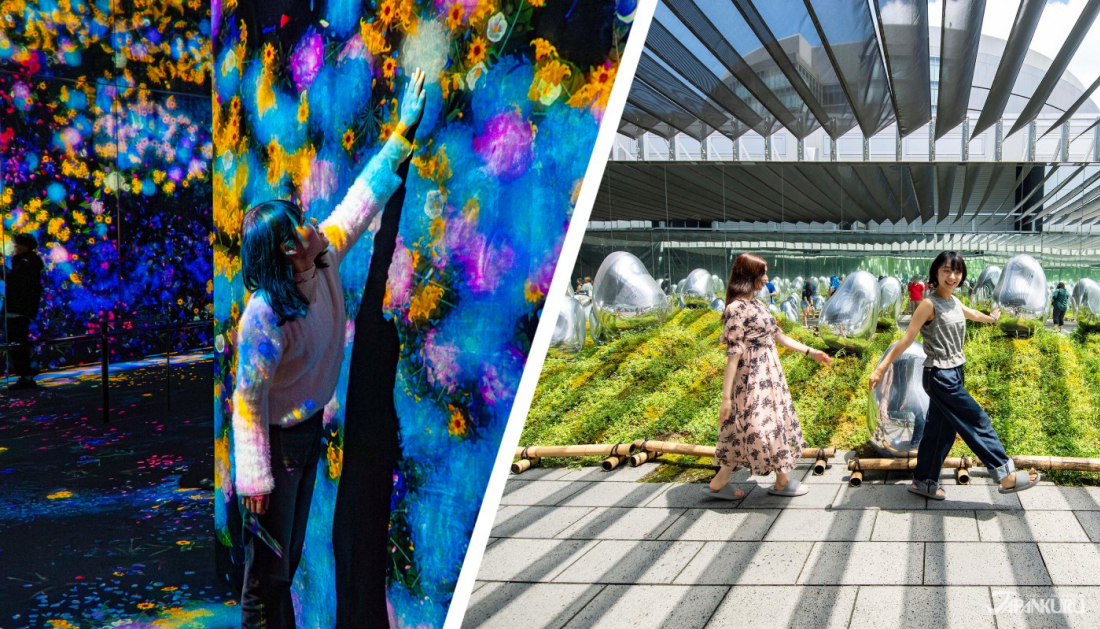
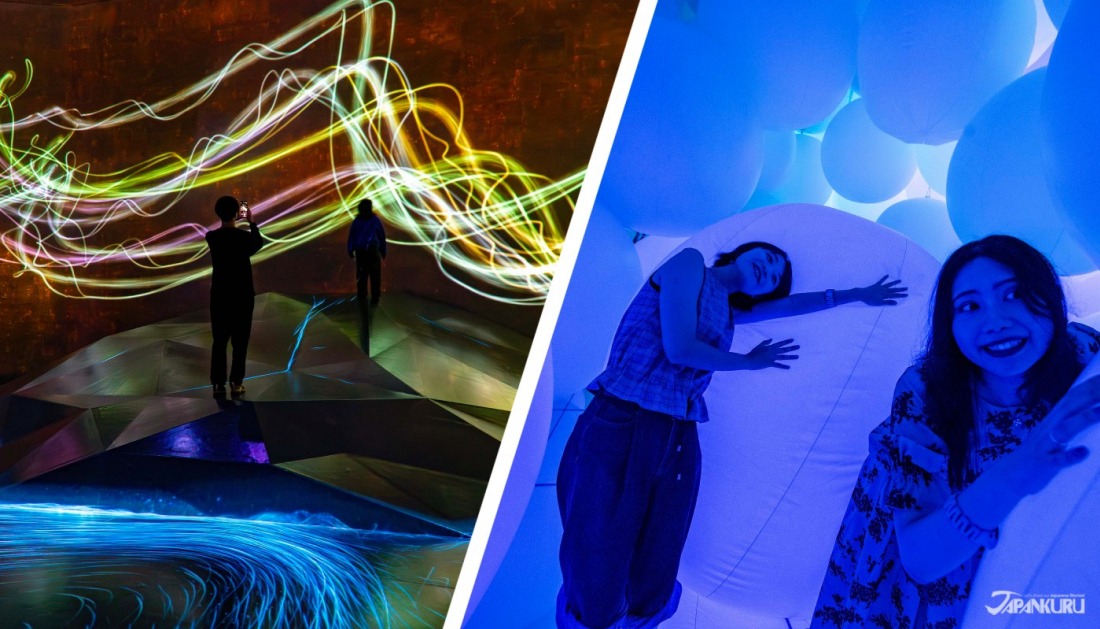
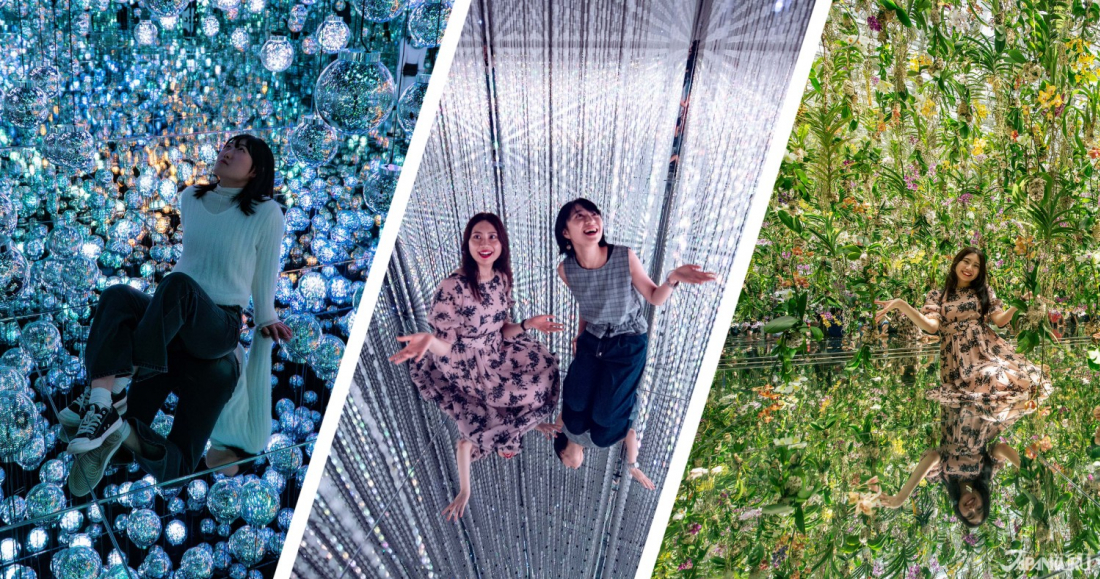
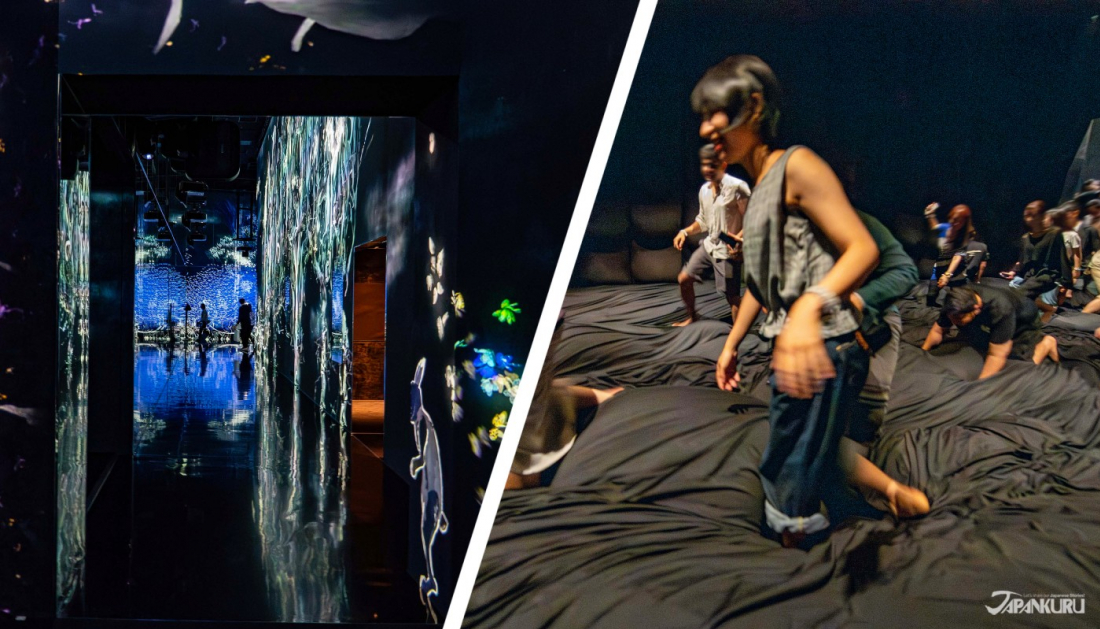
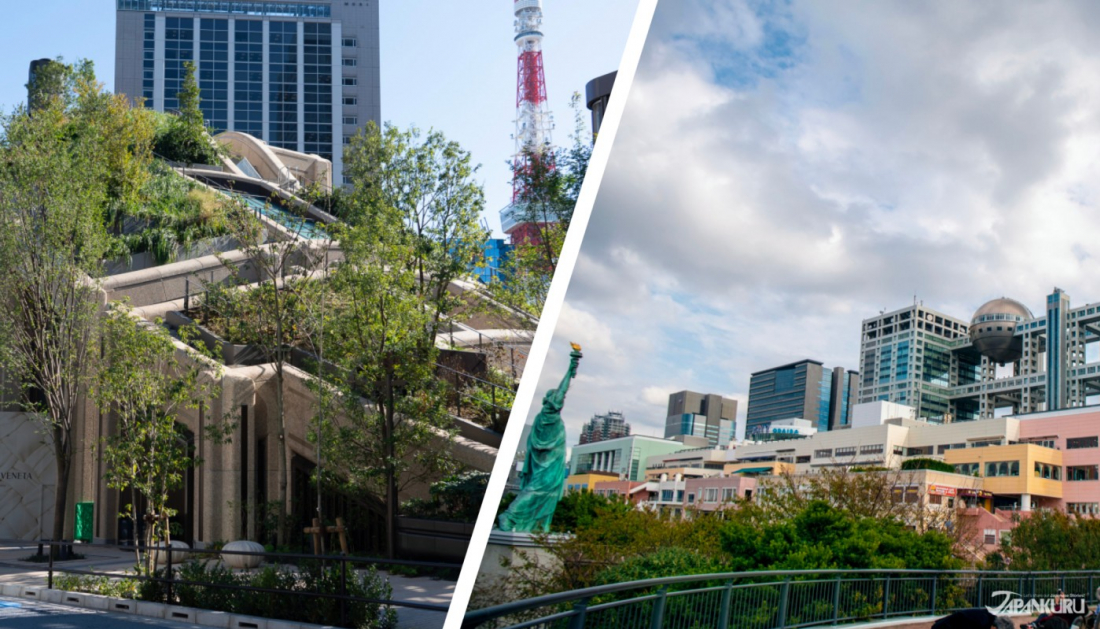
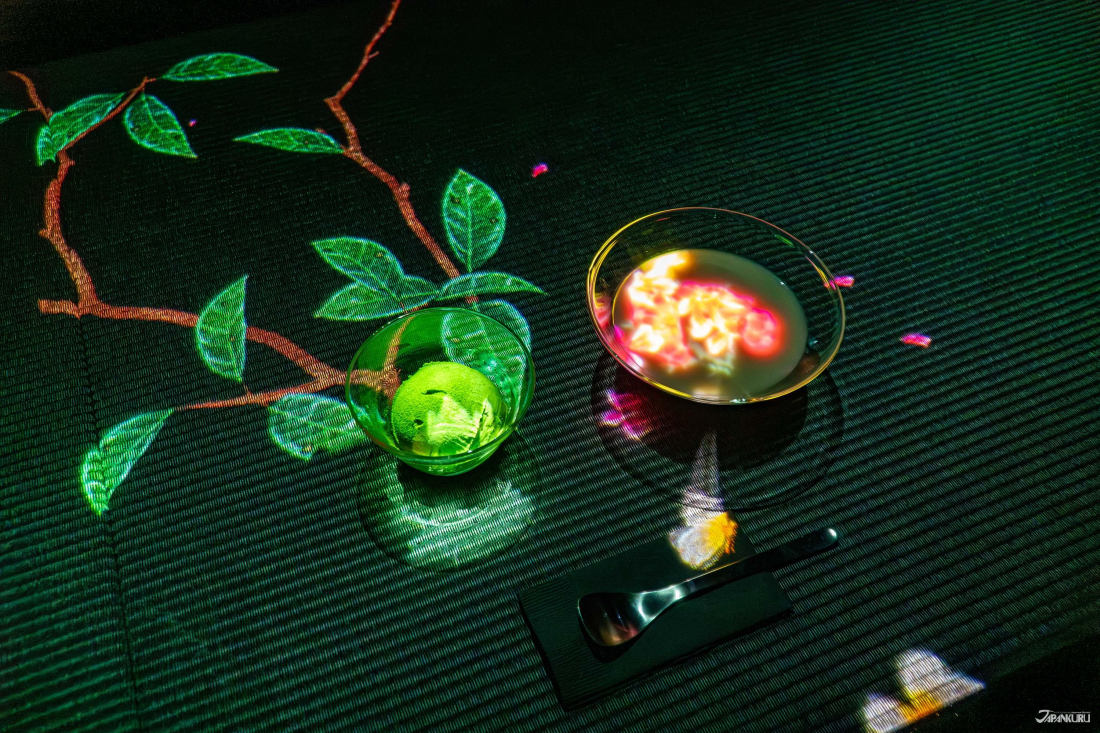
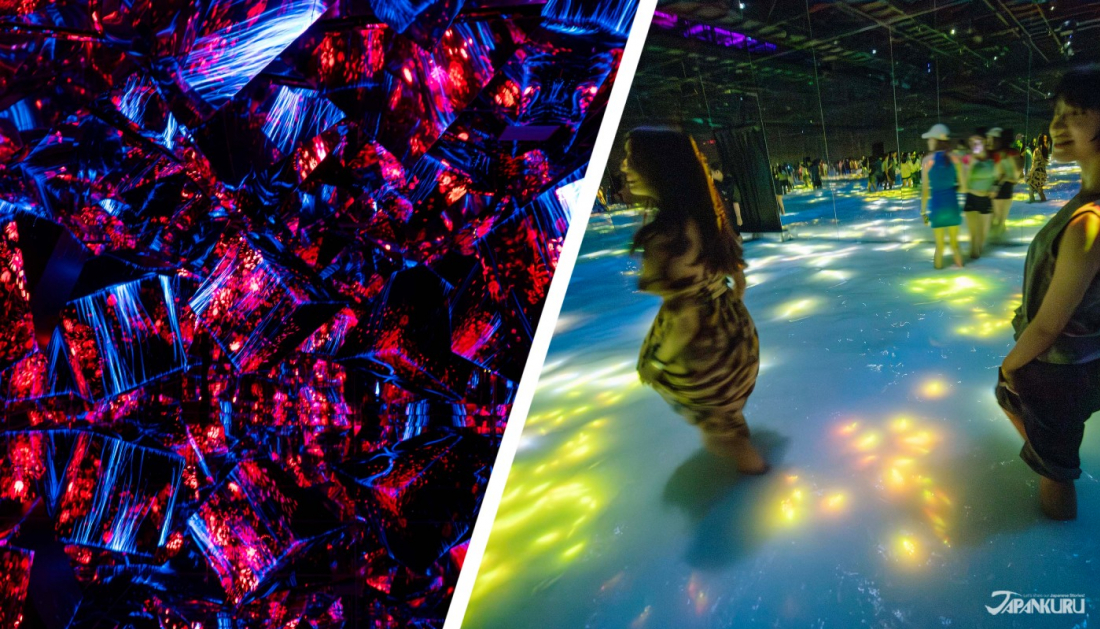





 >> Find out more at Japankuru.com! (link in bio)
#
>> Find out more at Japankuru.com! (link in bio)
#





 The Robot Restaurant is gone, but the Samurai Restaurant is here to take its place. Check it out, and don't forget your coupon!
The Robot Restaurant is gone, but the Samurai Restaurant is here to take its place. Check it out, and don't forget your coupon!
 신주쿠의 명소 로봇 레스토랑이 사무라이 레스토랑으로 부활! 절찬 쿠폰 발급중
신주쿠의 명소 로봇 레스토랑이 사무라이 레스토랑으로 부활! 절찬 쿠폰 발급중
 18歲以上才能入場的歌舞秀,和你想的不一樣!拿好優惠券去看看~
#tokyo #shinjuku #samurairestaurant #robotrestaurant #tokyotrip #도쿄여행 #신주쿠 #사무라이레스토랑 #이색체험 #할인이벤트 #歌舞伎町 #東京景點 #武士餐廳 #日本表演 #日本文化體驗 #japankuru #japantrip #japantravel #japanlovers #japan_of_insta
18歲以上才能入場的歌舞秀,和你想的不一樣!拿好優惠券去看看~
#tokyo #shinjuku #samurairestaurant #robotrestaurant #tokyotrip #도쿄여행 #신주쿠 #사무라이레스토랑 #이색체험 #할인이벤트 #歌舞伎町 #東京景點 #武士餐廳 #日本表演 #日本文化體驗 #japankuru #japantrip #japantravel #japanlovers #japan_of_insta
 코지마 x 빅 카메라 쿠폰으로 일본 가전 제품 쇼핑하기
#pr #japankuru #japanshopping #kojima #biccamera #japaneseskincare #yaman #dji #osmopocket3 #skincaredevice #日本購物 #美容儀 #相機 #雅萌 #日本家電 #일본여행 #면세 #여행꿀팁 #일본쇼핑리스트 #쿠폰 #일본쇼핑 #일본브랜드 #할인 #코지마 #빅카메라 #japankurucoupon
코지마 x 빅 카메라 쿠폰으로 일본 가전 제품 쇼핑하기
#pr #japankuru #japanshopping #kojima #biccamera #japaneseskincare #yaman #dji #osmopocket3 #skincaredevice #日本購物 #美容儀 #相機 #雅萌 #日本家電 #일본여행 #면세 #여행꿀팁 #일본쇼핑리스트 #쿠폰 #일본쇼핑 #일본브랜드 #할인 #코지마 #빅카메라 #japankurucoupon
































 Oita Hello Kitty Airport
Oita Hello Kitty Airport  Lands April 13th
Lands April 13th











